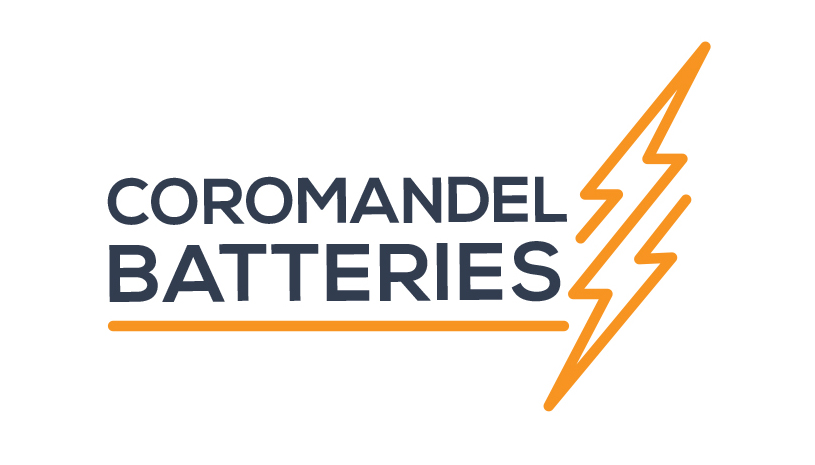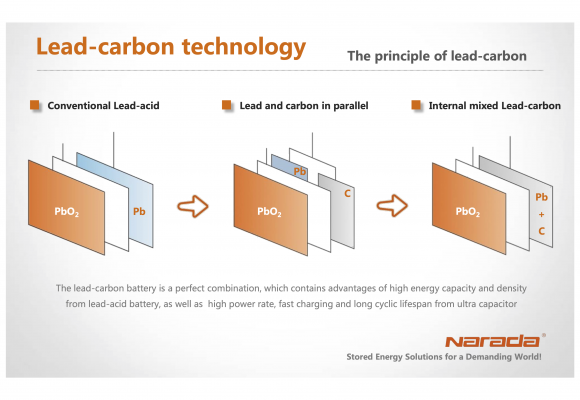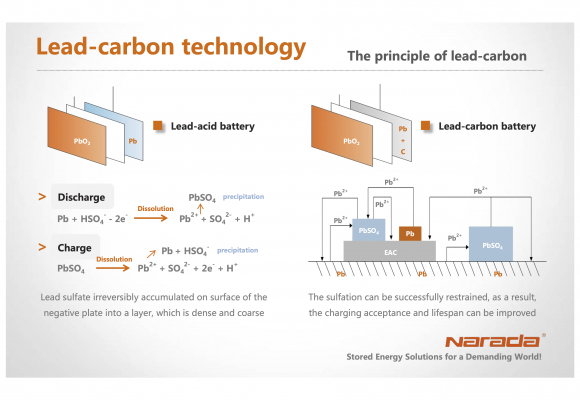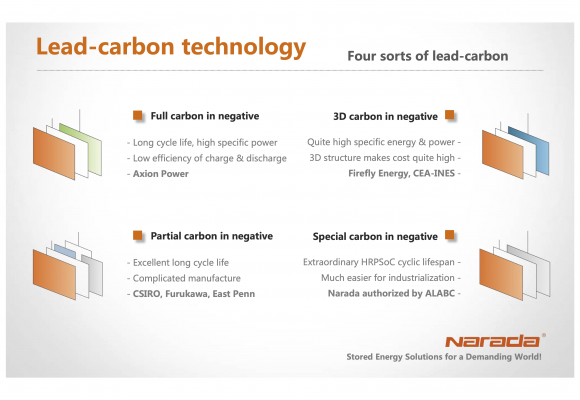Based on the original “UltraBattery” designed by the CSIRO in Australia and first commercialised in the USA in 2007, the REXC series battery technology uses a nano carbon material with high capacitance and high conductivity on the negative electrode. This combines the advantages of both lead acid batteries and super capacitors to enable faster recharge. The lead carbon battery technology provides not only a higher energy density, but also high power, rapid charge and discharge, and longer cycle life than traditional lead-acid batteries.
In solar off-grid situations batteries often spend many days in a partial state of charge. With traditional lead-acid batteries (flooded, GEL or AGM) this leads to sulphating on the negative electrode and loss of capacity over time. A typical traditional lead-acid deep cycle battery would be discharged to a maximum of 30% of its capacity and might achieve a cycle life of 1500 cycles (5 years) if maintained correctly.
Narada REXC batteries can be regularly discharged to 50% of capacity, and used in a partially discharged state for extended periods without damage, yet still achieve a cycle life of over 4500 cycles (12 years). When you have extended periods of cloudy weather, the occasional discharge down to 70 or 80% depth of discharge will not harm the REXC series battery, giving your system higher resilience overall.



